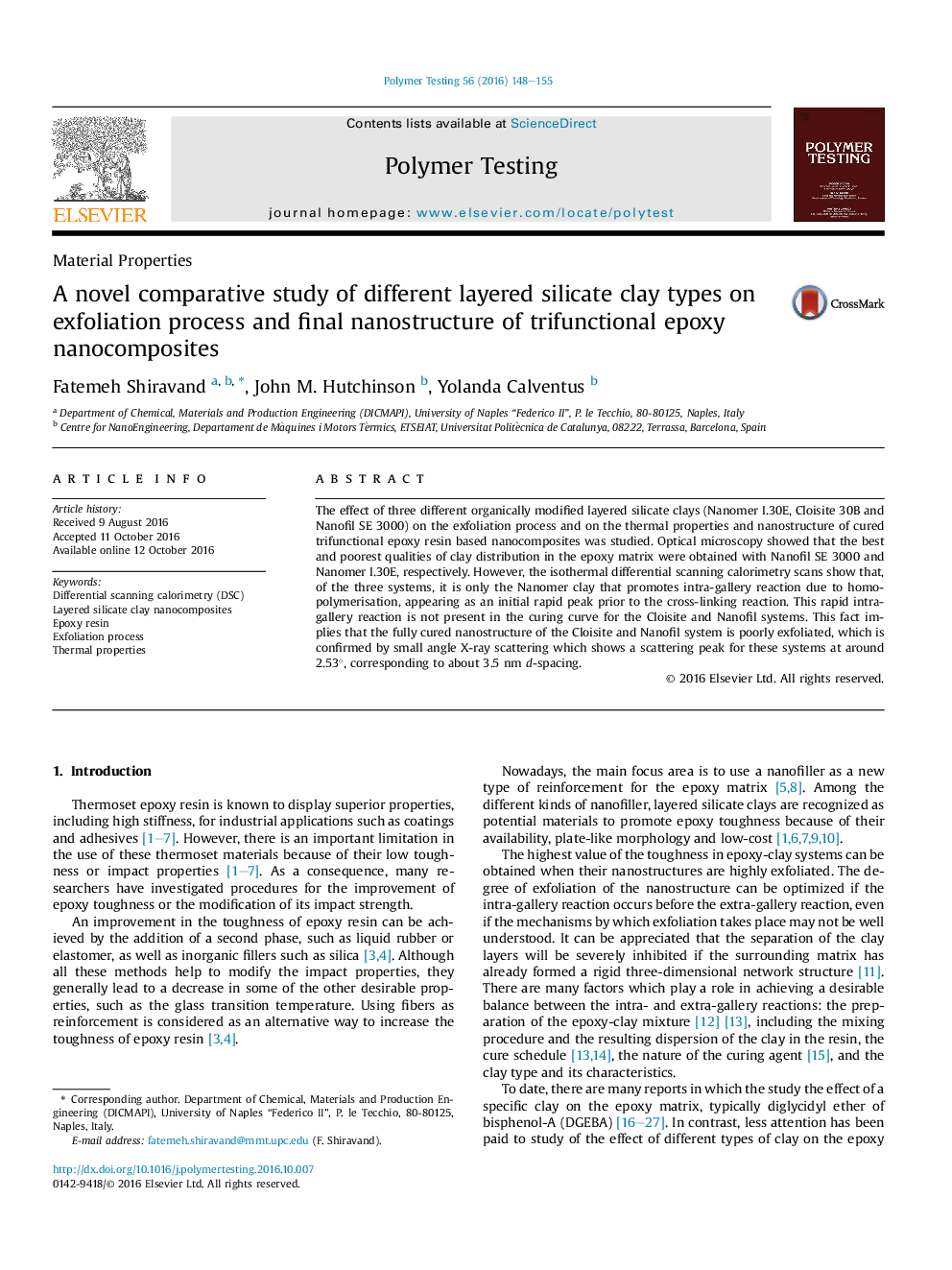| Article ID | Journal | Published Year | Pages | File Type |
|---|---|---|---|---|
| 5205590 | Polymer Testing | 2016 | 8 Pages |
The effect of three different organically modified layered silicate clays (Nanomer I.30E, Cloisite 30B and Nanofil SE 3000) on the exfoliation process and on the thermal properties and nanostructure of cured trifunctional epoxy resin based nanocomposites was studied. Optical microscopy showed that the best and poorest qualities of clay distribution in the epoxy matrix were obtained with Nanofil SE 3000 and Nanomer I.30E, respectively. However, the isothermal differential scanning calorimetry scans show that, of the three systems, it is only the Nanomer clay that promotes intra-gallery reaction due to homopolymerisation, appearing as an initial rapid peak prior to the cross-linking reaction. This rapid intra-gallery reaction is not present in the curing curve for the Cloisite and Nanofil systems. This fact implies that the fully cured nanostructure of the Cloisite and Nanofil system is poorly exfoliated, which is confirmed by small angle X-ray scattering which shows a scattering peak for these systems at around 2.53°, corresponding to about 3.5 nm d-spacing.
